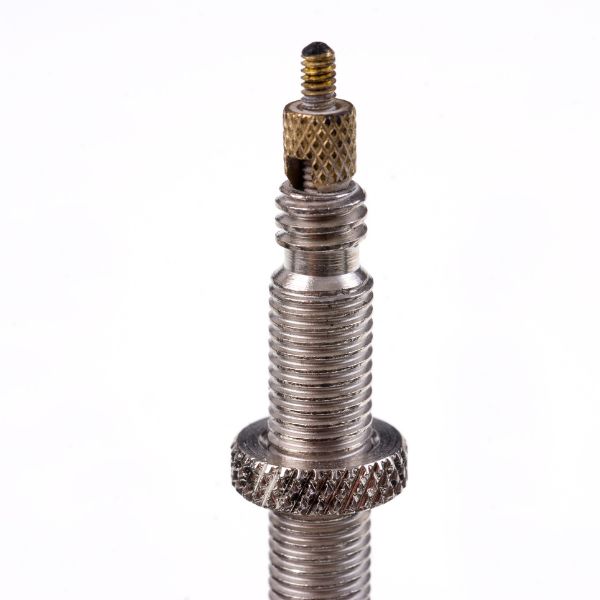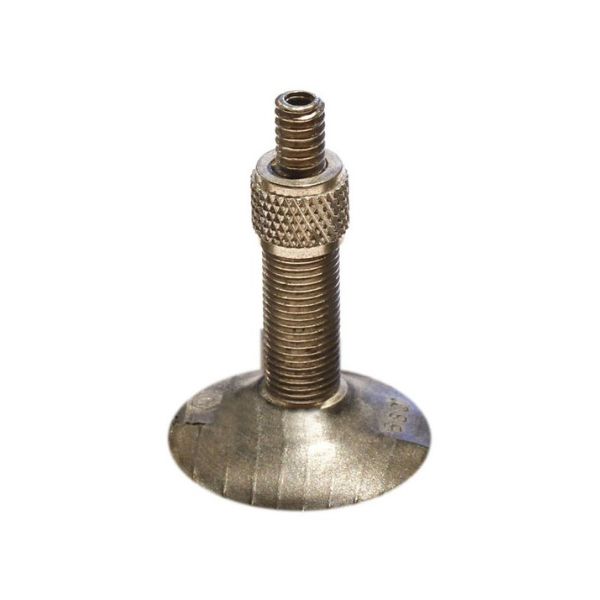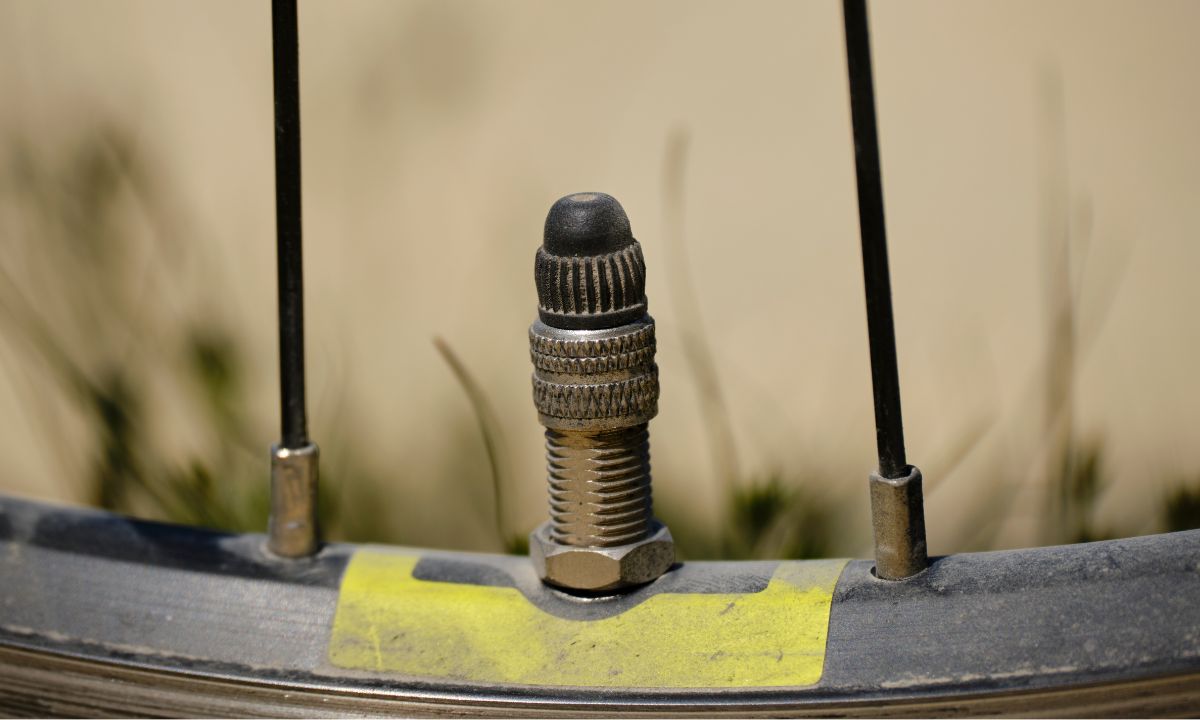Mountain Bike Tire Valve Types: An Expert’s Guide
Mountain Bike Tire Valve Types might seem small, but they play a pivotal role in your riding experience. As an expert MTB rider, I appreciate the subtle yet crucial difference a valve can make. Whether blazing down a rocky trail or climbing steep terrains, the right valve ensures your tires maintain optimum pressure.
“Mountain Bicycle World” has always been a hub for enthusiasts seeking in-depth knowledge. Today, I’m here to unravel the nuances of MTB tire valves. Join me as we delve deeper into this unsung hero of the mountain biking world.
Contents
The Basics of Bike Tire Valves
At their core, bike tire valves serve a straightforward purpose: they allow air in and prevent it from escaping unintentionally. Think of them as the gatekeepers of your tire’s air pressure, ensuring your tires stay inflated to your desired level.
There are two primary functions of these valves:
- Inflation: When you pump air into your tire, the valve facilitates this, ensuring a secure and efficient flow.
- Deflation: Sometimes, adjusting pressure is necessary for different terrains. Valves make controlled deflation easy without risking total air loss.
Though there are several types of valves, for mountain biking, we primarily focus on two. Understanding their differences and functionalities can significantly impact your ride’s quality and tire maintenance routine. Stick around as we dive deeper into the specifics of Presta and Schrader valves in the mountain biking realm.
The Two Main Types of MTB Tire Valves:
Presta Valve (French Valve)

The Presta valve, often referred to as the French valve, boasts a sleek and slender design, commonly found on high-performance mountain bikes and road bikes. It’s distinctively different in appearance from its counterpart, the Schrader valve, and offers unique advantages to mountain bikers.
Physical Description and Identifying Features
- The Presta valve is slimmer, with a locking nut at the top.
- This nut must be unscrewed to access the valve’s core and let air in or out, a characteristic unique to the Presta.
Advantages
- Better Air Retention: Due to its design, once the nut is secured, the valve is effectively sealed, offering superior air retention.
- Ideal for Racing Rims: The valve’s smaller diameter fits seamlessly on racing rims, which often have narrow holes.
Disadvantages
- Delicacy: The Presta valve is somewhat delicate, making it prone to potential bending or breaking if not handled with care.
- Pump Compatibility: Some pumps are tailored for Schrader valves, meaning you might need an adapter to fill a Presta valve.
Pro Tip
When inflating a tire with a Presta valve, always unscrew the nut fully and press down once to release a small amount of air. This ensures the valve isn’t stuck and prepares it for inflation.
In the world of mountain biking, the Presta valve is lauded for its precision and efficiency, though it requires a tad more care. Knowing how to handle and maintain it is key to harnessing its benefits fully.
Schrader Valve (Standard Automotive Valve)

The Schrader valve, sometimes termed the Standard Automotive Valve, is a robust and familiar sight for many, not just in the realm of mountain biking but in automobiles too. It’s more substantial and sturdier than the Presta, making it a favorite for many recreational riders.
Physical Description and Identifying Features
- The Schrader valve is bulkier with a wider diameter.
- It features a pin in the center, which needs to be depressed for air to be released or added, akin to car tire valves.
Advantages
- Durability: Constructed robustly, the Schrader valve can withstand rougher handling, a boon for those rugged rides.
- Universal Compatibility: Given its widespread use, finding a pump compatible with a Schrader is often easier. No adapters are necessary!
Disadvantages
- Fit Limitations: Its larger size may only fit some rims, especially those designed for high-performance racing.
- Air Retention: When disconnected from the pump, air’s slightly more likely to escape than with its Presta counterpart.
Expert Insight
The Schrader valve has been a staple in the tire industry for years, showcasing its reliability. It’s essential to ensure the valve cap is always on to prevent dirt and debris from entering, which could impede its function.
The Schrader offers many mountain bikers a blend of reliability and convenience. Its rugged design and widespread acceptance make it a practical choice, especially for those who prioritize ease and durability in their rides.
Maintenance and Care: Keeping Your Valves in Top Shape
Just like every component of your mountain bike, tire valves demand attention and care. Regular maintenance ensures they function optimally, safeguarding your ride’s performance and longevity.
Regular Checking
- Periodically inspect your valves for signs of wear, damage, or dirt accumulation. A clear, unobstructed valve ensures efficient airflow, pivotal for precise tire inflation.
Cleaning Your Valves
- Dust, mud, and debris can clog your valves, especially after muddy rides. Use a damp cloth or specific valve cleaning tools to clean around and inside the valve. Remember to replace the valve cap afterward to prevent future blockages.
Signs of a Damaged or Malfunctioning Valve
- Consistent air leakage or difficulty in inflation might indicate a faulty valve. Check for visible damage, rust, or a stuck valve core. If these symptoms persist, consider replacing the valve.
Replacing Valve Cores and Seals
- Both Presta and Schrader valves have cores that can be unscrewed and replaced if they start malfunctioning. Investing in a valve core tool is wise. Regularly check the seal, too. A deteriorated seal can compromise air retention.
Pro Tip
Lubrication can be a friend and a foe. While a tiny amount of lubricant can help in screwing or unscrewing a stubborn valve core, avoid overdoing it. Excess lubrication can attract dirt, leading to clogs.
Your mountain bike’s performance is partly hinged on the tiny yet significant tire valves. With regular maintenance and care, you not only ensure an uninterrupted ride but also extend the life of your tires and rims. After all, a mountain biker’s prowess isn’t just in the ride but also in the attention to detail.
Further Reading: Mountain Bike Pump VS. Road Bike Pump
Conclusion
As thrilling as it is, mountain biking also comes with its intricate details and nuances. While the adrenaline rushes of steep descents and challenging terrains are the main attractions, the technical aspects, like understanding and maintaining our tire valves, play an equally pivotal role in our biking adventures. The right knowledge about “Mountain Bike Tire Valve Types” optimizes our riding experience and safeguards our equipment, ensuring longevity and peak performance.
As we wrap up this deep dive into the world of MTB tire valves, it becomes evident that these seemingly small components carry immense weight in the larger scheme of things. So, let’s appreciate them, care for them, and ensure they’re always in top shape. After all, the little things often make the biggest difference. Ride safe, ride smart, and never underestimate the heartbeat of your bike – its tire valves.


